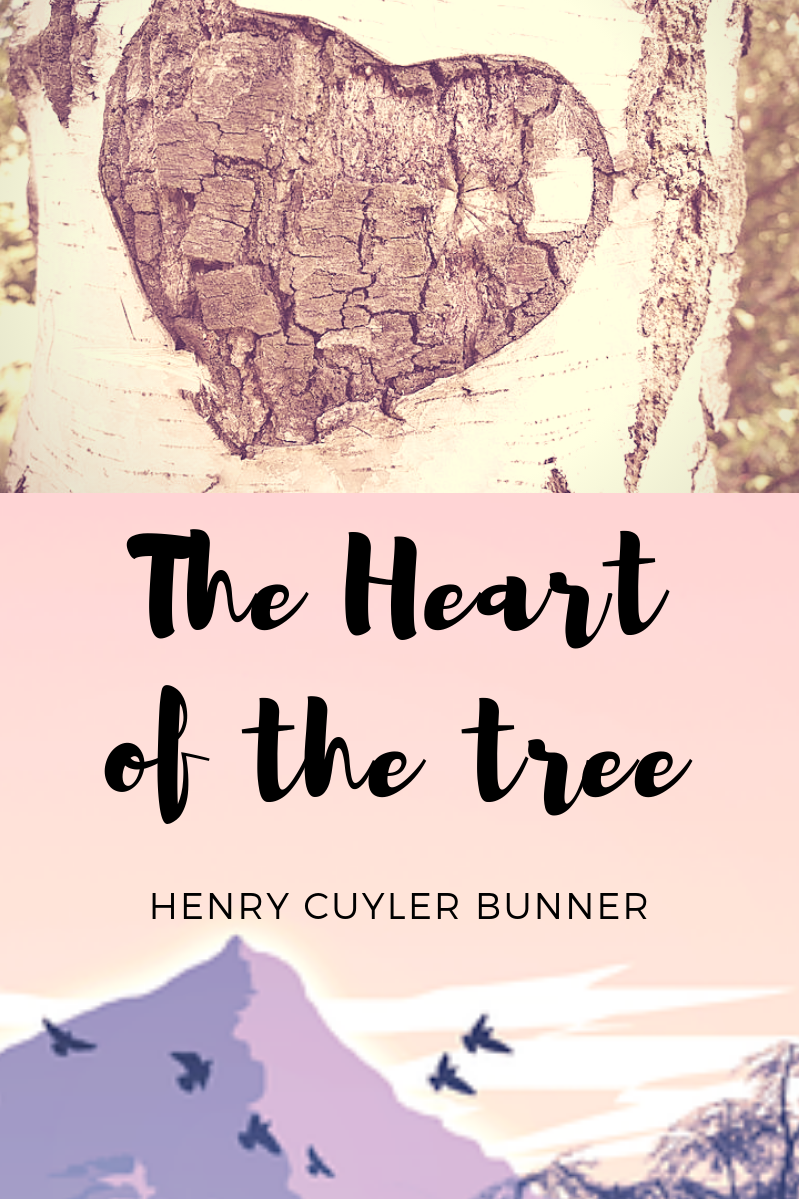
The Heart of the Tree | About the Poem
This summary of The Heart of the Tree shows how this poem revolves around the themes of ecological conservation and the love and respect for nature. The title of the poem “The Heart of the Tree’ draws the reader’s attention to the ‘Heart’ of the tree. The personification of tree imbues it with human-like qualities which is elevated to an even higher pedestal by showing what the heart of tree contains : goodness. The author wants to give human-like qualities to the tree so as to persuade the readers in planting one and in order to make cutting down of a tree seem more barbaric.
To undo these effects the solution the poet provides is at once simple and effective – Plant more trees.
Got No Time? Check out this Quick Revision by Litbug. Click on the link below.
https://m.facebook.com/Litbug.co/photos/a.353106305495706/888377391968592/?type=3&source=48&ref=bookmarks
The Heart of the Tree | SUMMARY AND ANALYSIS
The Heart of the Tree | Stanza 1
WHAT does he plant who plants a tree?
He plants a friend of sun and sky;
He plants the flag of breezes free;
The shaft of beauty, towering high.
He plants a home to heaven anigh
For song and mother-croon of bird
In hushed and happy twilight heard –
The treble of heaven’s harmony –
These things he plants who plants a tree.
The poem opens with a rhetorical question : “What does he plant who plants a tree?” The rest of the poem is the answer to this question provided by the poet. This technique of posing a question and immediately following it with an answer is known as hypophora. This technique generates interest in the reader and we see the recurrence of this pattern in the first and the last lines of every stanza of this poem.
We are told that he who plants a tree plants a friend of the sun, the sky and a flag of the free breezes. The tree is personified as a friend of the sun and the sky as the tree, being a living entity, provides a companionship to both. The leafy branches of the tree are likened to a flag fluttering in the cool breeze and its trunk is likened to a high towering pole (shaft ) of beauty. Both instances (flag of breezes and shaft of beauty) are examples of metaphor used in this stanza. He who plants a tree also plants a home nearer to sky (home to heaven anigh) where the mother bird softly hums a soothing tune(croons) to her chicks after sunset. The words “home to heaven” and “hush and happy” show the use of alliteration. The tree provides a safe home to the birds who can rest on its branches at the end of the day and sing songs which are the treble (a high note in music) of heaven’s harmony. Both treble and harmony are musical terms that is used to describe the birdsong. These, along with the use of words like croon and hush creates a powerful aural imagery in the poem.
He who plants a tree doesn’t just plant a tree. He plants someone’s friend, someone’s home, someone’s safety and someone’s reason to be happy and sing a soothing song of peace and security.
The Heart of the Tree | Stanza 2
What does he plant who plants a tree?
He plants cool shade and tender rain,
And seed and bud of days to be,
And years that fade and flush again;
He plants the glory of the plain;
He plants the forest’s heritage;
The harvest of a coming age;
The joy that unborn eyes shall see –
These things he plants who plants a tree.
The planter of a tree plants cool shade and tender rain: both for humans and for the soil. Trees provide a cool shade during hot summers and a place to keep dry during rainy days. The use of the words “tender rain” also captures the role of trees in tackling soil erosion. Not only do the trees soften the intensity of the sun’s rays on the soil below, their roots bind the soil and prevent it from getting eroded. Not only do they aid rainfall through transpiration, their leaves and branches reduce the impact of rain on the soil thereby making it a “tender rain“.
The planter of trees also plants seeds and buds of the coming days. Seeds and buds represent the promise of life and a potential for growth. The use of “cool shade“, “tender rain” and “seeds and buds” used to refer to tree is an example of metonymy.
One who plants a tree also plants a living entity whose leaves fade in autumn and flush in the springtime. “Fade and flush again” yet again shows the use of alliteration. He plants the glory of the land and a heritage of the forest – two epithets used to describe the splendor of trees.
The repetition of words at the beginning of successive lines creates a certain impact while reading the poem . Notice the lines:
And seed and bud of days to be,
And years that fade and flush again;
He plants the glory of the plain;
He plants the forest’s heritage;
This technique of repeating words and phrases at the beginning of successive lines is a rhetorical technique known as anaphora and is used to create an impression on a listener/reader while trying to persuade him/her. The use of anaphora is especially effective in this poem as it is a poem that tries to persuade the reader to plant trees by enumerating its qualities.
Planting a tree ensures a harvest for the future generation (coming age). It is a gift of a better life from the present generation to the future ones. A synecdoche (a figure if speech in which a part is used to represent the whole of something ) is used to describe the trees that will be the joy that children of the future (unborn eyes) shall see.
Thus, the person who plants a tree also plants a promise of life, a seed of hope, the heritage of the ecosystem and gives a gift to the future.
The Heart of the Tree | Stanza 3
What does he plant who plants a tree?
He plants, in sap and leaf and wood,
In love of home and loyalty
And far-cast thought of civic good –
His blessing on the neighborhood
Who in the hollow of His hand
Holds all the growth of all our land –
A nation’s growth from sea to sea
Stirs in his heart who plants a tree.
The final stanza celebrates the sheer nobility in the act of planting a tree. The planter of a tree not only plants resources for the future in the form of sap and leaf and wood, he also plants within the tree his virtues, “his love for home and loyalty“. In short, one plants a part of one’s being while planting a tree.The second line shows the use of a literary device of repetition :
He plants, in sap and leaf and wood,
The repetition of the conjunction and emphasizes the importance of what is being said by slowing down the pace of the poem. This technique is known as polysyndeton in literature.
The love for home doesn’t merely refer to one’s home but also to Earth, the only place we have to call home in the universe (so far). Similarly, loyalty doesn’t just refer to one’s country but also loyalty towards the environment which has given so much to us. By planting a tree, one plants the forethought of doing some good to the citizenry and making the world a better place. In doing all these things, the one who plants trees also plants God’s blessings: of “He who holds” the well being and growth of the land in the hollow of His hands as suggested by the use of a capital H. This interpretation is corroborated by the fact that the Hollow of His Hands was also the name of a very popular hymn at a time when the poem was composed. (In fact the composer of the hymn E.S Lorenz founded the Lorenz Corporation, a music publisher which set The Heart of A Tree to music).One may also read the lines as the godlike ability of the planter of the trees to bless the future generation and of holding the key to the growth of a nation from one frontier to another.
The final stanza of the poem projects the act of planting a tree as something which connects human to the divine. Planting a tree allows us to act as an agent of God’s blessing and also enables us to bless the world in a godlike manner by creating a better future and leaving the world in a little better shape than we found it.
The Heart of the Tree | About the author
Henry Cuyler Bunner was a 19th century American writer who is known for some of his poems and short stories. Born on 3rd August 1855 in Oswego, New York, most of Bunner’s formative years were spent in New York City where his keen observation of people and society furnished him with ample content for his short stories. He joined a comic weekly called Puck and later became its editor, turning it from an unknown weekly to one of the most important platforms for social satire and political commentary. He published his first novel The Midge in 1886 but it was his short stories which gave him considerable popularity. Two collections were especially popular during his times : Short Sixes and Made in France. He also wrote some interesting poems some of which feature in collections like Airs From Arcady and Elsewhere and Poems.The Tower of Babel is considered to be his most important play.
Henry Bunner died on 11th May 1896 at an age of 40.



